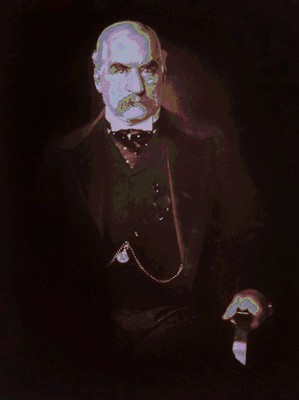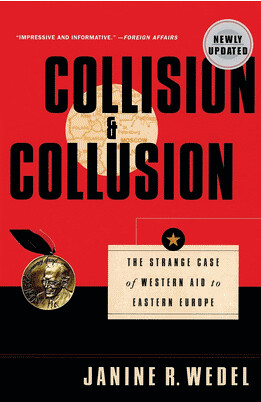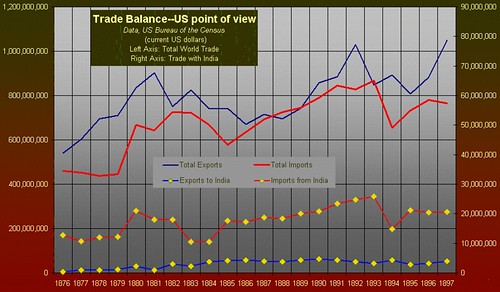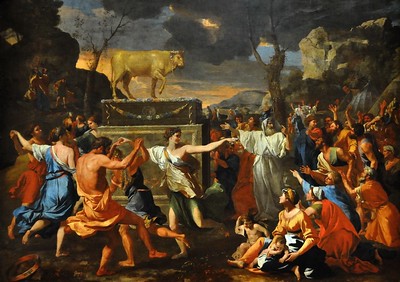List of Depressions 🙵 Panics, 1821-1929
UPDATE (2 Aug 2013): This article has been substantially revised since initial posting.
The Panic of 1907 was historically significant for the United States because it triggered a wave of legislative activity that culminated in the creation of the Federal Reserve System in 1913.
The underlying problem was that the financial system lacked any means to deal with panics, manias, or crashes.
1 "No adequate lending power or surplus cash reserve was available at any time except during periods of trade depression when the banks were unable to find borrowers for all the loans they were prepared to make." (A reminder: the US financial system of the 19th century was very
seasonal, with massive fluctuations in the quantity of gold reserves over predictable cycles. Despite the strong correlation of credit demand with region and recurring annual phases, the sheer size of the fluctuations seem to have often triggered bank failures).
In March 1900, Congress passed the Gold Standard Act; the main goal of this law was to further entrench the gold standard, ending prior arrangements that supplemented gold reserves with a limited amount of silver reserves, and so on.
2 A lesser-noted clause made it easier for banks to issue banknotes, and the money supply (in banknotes) more than doubled in seven years leading up to the crisis. Net deposits also doubled, growing much faster than net reserves of the National Bank system.
3 Bearing in mind that seasonal variations in gold reserves and issues of banknotes took the form of big, annual shifts in "net debtor" status for different regions, it is not hard to see how the New York banking system, emerging from its mammoth summer deficit, ran into trouble.
The Trust Companies
Usually, in the context of 19th/20th century business, we think of trusts as the systems of industrial organization that gathered up ownership of many different firms (typically competing in a single line of production) into a single decision-making body, usually for the purpose of monopolistic price-fixing. Trust
companies, on the other hand, were a type of under-regulated bank:
Beginning in the 1890s, trust companies took on most of the functions of both commercial and private banks. They accepted deposits; made loans; participated extensively in reorganizing railroads and consolidating industrial corporations; acted as trustees, underwriters, and distributors of new securities; and served as the depositories of stocks, bonds, and titles. Corporations regularly appointed them as registrars or fiscal and transfer agents. Very often they also owned and managed real estate.4
The trust companies were allowed to own equities directly, which may have tied them to the monopoly-trusts; they had lower reserve requirements than banks, but were not allowed to participate in the check clearinghouse system. This was to prove deadly for them.
5
The Knickerbocker Company was a New York firm founded in 1884 by Fred Elridge (making it one of the older specimens). It performed most types of financial services, including underwriting, but it also took deposits offered checking accounts.
6
Fritz Augustus Heinze was a mining expert who built a copper empire in Montana, eventually inducing Amalgamated Copper (Anaconda
🙵 Standard Oil) to buy him out for $12 million. He returned to New York and worked with a financier, Charles Morse, to create a bank that would serve as the linchpin of a banking trust; this bank was the Mercantile National Bank.
7 At the same time, Heinze consolidated the rest of his Western mining interests into an entity called United Copper, and effectively managed that. while serving on the boards of many tightly-related banks/trust companies.
Unfortunately, Heinze bought a seat on the stock exchange for his brothers, Arthur and Otto, as well as setting them up on Broadway as brokers. The brothers tried to corner the market on United Copper shares, forcing short sellers to restore their borrowed holdings at higher prices. The stock market is often a very brutal, devastating place, and while the Brothers Heinze thought this would be easy to pull off, they were unaware of how many shares of stock were publicly circulating. They had involved the President of the Knickerbocker Trust, Charles T. Barney, in financing their corner, even though he had refused in the end to go through with the scheme. The United Copper squeeze initially did look like it was going to work, but on 4 October 1907, the corner broke and the price fell. Otto Heinze's firm was bankrupt, and he was suspended.
Even more unfortunately, the failure of the United Copper corner led to a general panic about all things Heinze. The Mercantile Bank was forced to suspend its operations; so was the Knickerbocker Trust Company. Charles T. Barney committed suicide as the run took down his firm, and depositors began to lose confidence in most types of depository institutions.
Crisis
 |
| J.P. Morgan totally not clutching a knife |
The drama surrounding the Knickerbocker T.C. and the Mercantile National Bank was confusing, complicated, and ridden with erroneous rumors. Barney, Knickerbocker's president, was not involved in the United Copper squeeze, but was a close associate of Morse, Augustus Heinze's partner at the Mercantile. Contagion spread like a shockwave, as banks tried to stave off ruin by renouncing any officials with a "blemished character."
After the run, the most obvious firewall was the NY Clearing House (NYCH), which had led the demands for a general purge of banking officials. It was able to require member banks to suspend their arrangements to clear checks for affiliated trust companies, although Knickerbocker was allowed to resume clearing checks after it sacked its management.
Most histories lavish J. Pierpont Morgan with praise for having organized the rescue of the banking sector; most also approve of his use of the crisis to win permission from President Theodore Roosevelt to buy the Tennessee Coal 🙵 Iron Company, merging it to Morgan-allied US Steel. The Justice Department felt this concession was a mistake on Roosevelt's part, and tried to claw it back, to no avail.
The main part of the crisis narrative, in the minds of the many articles I have read about this, is that Morgan managed to squeeze the leadership of the American financial sector for cash reserves to rescue itself
en bloc, in a time where bankers had every motive to hoard their resources. Let me pause and reassure readers that this was a fine accomplishment, and no doubt required a high degree of skill, determination, and physical fortitude on Morgan's part. Morgan also had a staff of experts who covered themselves with glory, including
George W. Perkins and
Benjamin Strong (PDF).
However, one of the problems was that Morgan and his allies were defending a system that was dependent not only on the good graces of a supreme moral authority like J.P. Morgan. Morgan's tenure was closely tied to the willingness of his competitors to submit to him when it was clear that the system was genuinely threatened; that the system needed a small number of powerful arbiters who could, in turn, agree to the good-faith supervision of a super-arbiter like Morgan. The system required an extreme attentiveness to character and the evidence of character; so, for example, when one gilt-edged bank executive was revealed to have conspired against the right of traders to short a copper trust, the moral horror supposedly blew up Wall Street.
The importance of character does indeed make this epoch look very virtuous; yet the judgments were usually poor. One pictures a system where people were under constant scrutiny for blemishes that might reveal their unfitness for fiduciary responsibility, and yet the people caught up in the collapse of the Knickerbocker Trust Company were usually chosen randomly: banks were stricken by runs that had no connection with the United Copper corner, and Charles Morse moved from scheme to scheme. People often substituted snobbery for judgment: antisemitism was a crushingly depressing feature of the financial world, for example.
The Crisis of 1907 did in fact dramatically depress industrial production through 1908, with a fairly strong recovery by autumn of 1909 (measured by employment).
8 One factor was the sharp decline in cash for ordinary transactions; instead, a large proportion of Americans were induced to use clearing house certificates as money surrogates.
9 As many as two-thirds of all US cities with a population over 25,000 issued these certificates, and they utterly dominated the money supply until March 1908. The crash experiment in improvised money was one of the most successful I've ever seen, and probably contributed to the mild impact on labor demand.
The shortage of gold in a time of bank runs (in a country on a gold standard) is not surprising: the usual exchange of credit as a gold substitute in such economies was no longer as easy. As with the Crisis of 1893, the contraction of credit spilled over into a major shortage of paper money. All parties tended to hoard cash as well as gold, and the velocity of money fell. Criticism of the banking response by Sprague (1910) was directed mainly at the timid character of the banks eager to restore their own reserves above all else.
10
Postscript: the Creation of the Federal Reserve System
Regardless of how one describes it, the Panic of 1907 revealed the extreme dependence of the
Usonian financial system on a smallish component of globalized commodity markets; and on the intervention in particular of J.P. Morgan. Even if one were to accept uncritically Bruner
🙵 Carr's adoring hagiography, one would still have to recognize that Morgan was a mighty thin reed from which the financial system could hang.
11
In May 1908, Congress passed the Aldrich-Vreeland Act that provided a process of transition to an as-yet unknown national banking system. Aldrich-Vreeland provided firstly for the creation of "national currency associations"
12 and secondly for the convening of a National Monetary Commission (NMC) for addressing the chaotic state of the US banking-money system. The process of drafting a plan was quite complicated, and furnished ample material for critical accounts. Nevertheless, the plan was finalized during the (Republican) 62nd Congress and passed during the (Democratic) 63rd Congress. Most available data suggest that Pres. Woodrow Wilson's influence on the Federal Reserve Act was minor.
13
NOTES:
- Sprague (1910), p.217
- Frank W. Taussig, "The United States Currency Act of 1900," The Economic Journal Vol. 10, No. 38 (Jun., 1900), pp. 226-232. Prof. Taussig acknowledges that the USA had long been under a gold standard since '79.
- Sprague (1910), p.218. The growth of the money supply following the passage of the Gold Standard Act was pretty much the opposite of what I would have expected, to say nothing of being a wildly dramatic development taking place in the Victorian/Edwardian Era. The decline of cash reserves (as a share of outstanding loans) fell steadily from 17.9% to one 12.8% over this period. Proponents of the act, as well as Robert Sobel, Chernow (1990), Bruner, and Carr, blamed the persistence of silver coinage (Sherman Silver Act of 1890); see "Digression on the 1893 Crisis and Currency," on this very blog (23 Feb 2010).
- Vincent Carosso, Investment Banking in America, Harvard University Press (1970) p.99; cited in Bruner 🙵 Carr (2007), pp.66-67.
- Although sometimes trust companies had bilateral partnerships with member banks. See Bruner 🙵 Carr (2007), pp.67-68. The Knickerbocker Trust Company had an arrangement with the National Bank of Commerce for check clearing.
- Information about the Knickerbocker T.C. comes from Bruner🙵 Carr. For detailed financial data of the state banks and trust companies, see Annual Report of the Comptroller of the Currency, Government Printing Office (1907).
- Bruner 🙵 Carr (2007), pp.38ff ADDED: Gilbert King, "The Copper King’s Precipitous Fall," Smithsonian Mag (20 Sep 2012).
- Official national income and product figures were not available until later, but the NBER hosts ex post estimates of, e.g., industrial output and employment. My impression is that the 1907 crisis was relatively minor in its impact on employment, and was completely over by September 1909, but readers need to understand that nationally aggregated effects are usually milder than regional effects.
- James G. Cannon, "Clearing House Loan Certificates and Substitutes for Money used during the Panic of 1907"(PDF), delivered before the Finance Forum, NYC (30 March 1910); housed by the St. Louis Federal Reserve Bank (accessed 25 Feb 2010). This document is utterly fascinating! It includes samples from dozens of US cities, including one from Harrisburg, PA with a legend in English, Polish, Hungarian, and Italian.
- Sprague (1910), "Expansion of the Circulating Medium," pp.314-320. Sprague firmly insists that the cowardly reaction of banks, especially New York banks, in protecting their reserves by hording gold, was a natural consequence of the diffuse nature of the system.
- Bruner🙵Carr (2007) emphasize the rescue effort of Morgan to the exclusion of his prior role in the New York money markets. Chernow's account of the panic, while far briefer, likewise presents Morgan as a benign influence. But Chernow's account follows the longer history of Morgan's rise to preeminence in finance: not just the man, but the institution he created.
- Text of bill, quoted in Barrons, p.199; mercifully summarized in Wells (2004), p.17; I noticed that the never-used bill issue clause was modeled on similar provisions of the Imperial Bank of Germany. See Conant (1909), "German Banks," p. 204.
- See, for example, Friedman 🙵 Schwartz (1963), p.171, n. Their account emphasizes the research of different banking systems around the world, extracts of which are available online in Banking and currency in the United States, Vol. IV, No. 1, Academy of Political Science, (Oct 1913). See also Wells (2004), p.18. This is the view of authors who actually compared the two pieces of legislation. Wells mentions the difference was that the President of the USA would appoint the governors under the Glass Plan, whereas the boards of the regional banks would have appointed the governors under the Aldrich Plan.
(Note: there are seven governors appointed by the President, with 14-year terms; one retires every two years, so the impact of presidential appointment is greatly reduced. Another five members of the open market committee that sets FRS policy are representatives of the regional banks, with NYC always represented. The Aldrich Plan provided for one universal discount rate; the Glass Plan allowed for 12 different ones. Soon after the FRS began operations, the 12 regional banks agreed to coordinate open market activities, and restored the single discount rate. So in that sense, the Aldrich-Vreeland Plan won out even though Congress actually passed the Glass Plan.)
SOURCES 🙵 ADDITIONAL READING
Robert F. Bruner
🙵 Sean D. Carr,
1907: Lessons Learned from the Market's Perfect Storm, John Wiley
🙵 Sons (2007). Mostly focuses on contagion of crisis from United Copper Co. to Knickerbocker Trust , and J.P. Morgan's personal efforts to stem flight of capital from Wall Street.
Ron Chernow,
The House of Morgan, Atlantic Monthly Press (1990), Chapter 7: "Panic"
Charles Conant,
A History of Modern Banks of Issue, G.P. Putnam
🙵 Sons (1909), esp. "The Crisis of 1907," p.698. Vital resource, although chapters on crises require close reading. Very useful to cross-reference with Friedman
🙵 Schwartz (1963).
Milton Friedman, Anna Jacobson Schwartz,
A monetary history of the United States, 1867-1960, Princeton University Press (1971), "Gold Inflation and Banking Reform, 1897-1914"
Robert Sobel,
Panic on Wall Street: a Classic History of America's Financial Disasters, E. P Dutton (1988), "The Knickerbocker Trust Panic of 1907"; brief synopsis of the crisis dominated by colorful highlights and excitement of Wall Street trading. but generally unhelpful.
O.M.W. Sprague,
History of crises under the national banking system (PDF), Volume 5624, United States. National Monetary Commission (1910). Discovered via Friedman
🙵 Schwartz (1963); totally indispensable resource. Detailed but concise.
Specifically Related to the Federal Reserve System
Clarence Walker Barron,
The Federal reserve act: a discussion of the principles and operations of the new Banking Act, Boston News Bureau (1914); includes text of relevant acts
J. Lawrence Broz,
The international origins of the Federal Reserve System, Cornell University Press (1997).
I have not read this book. David C. Wheelock (Federal Reserve Bank of St. Louis)
sympathetically outlines the book's thesis, that the Federal Reserve System was designed chiefly to establish the US dollar as an international currency. However, Wheelock doesn't say what design judgments—what sacrifices—were made to achieve this end. So I will have to wait until I have actually read this book.
William Greider,
Secrets of the Temple: How the Federal Reserve Runs the Country, Touchstone (1987), "The Great Compromise," p.268. Mainly addresses the context of the Federal Reserve's creation and subsequent rise to supremacy in Usonian economic policy. The chapter on the FRS's creation is an essential addition to the arid tomes on gold points and discounting of commercial paper; it mentions many of the political compromises that molded the present institution.
Henry R. Mussey, ed.,
Banking and currency in the United States, Vol. IV, No. 1, Academy of Political Science, (Oct 1913). This is the most valuable resource I have found to date on the Fed and its development. It includes essays by key policy makers and opponents of the FRS, including some two hundred pages of analysis by Paul Warburg.
Donald R. Wells,
The Federal Reserve System: a history, McFarland (2004)
Labels: anthropology, economics, history











